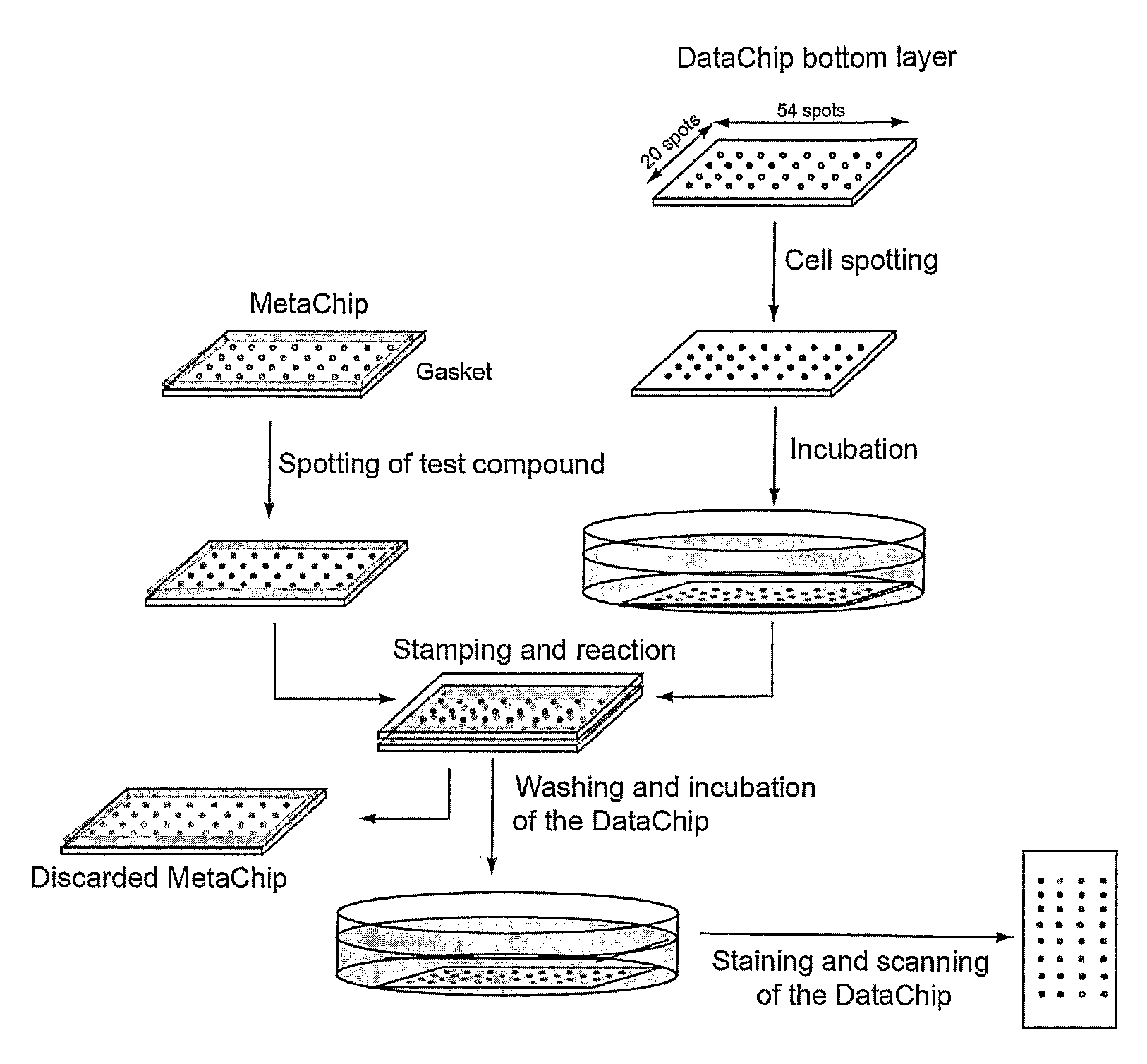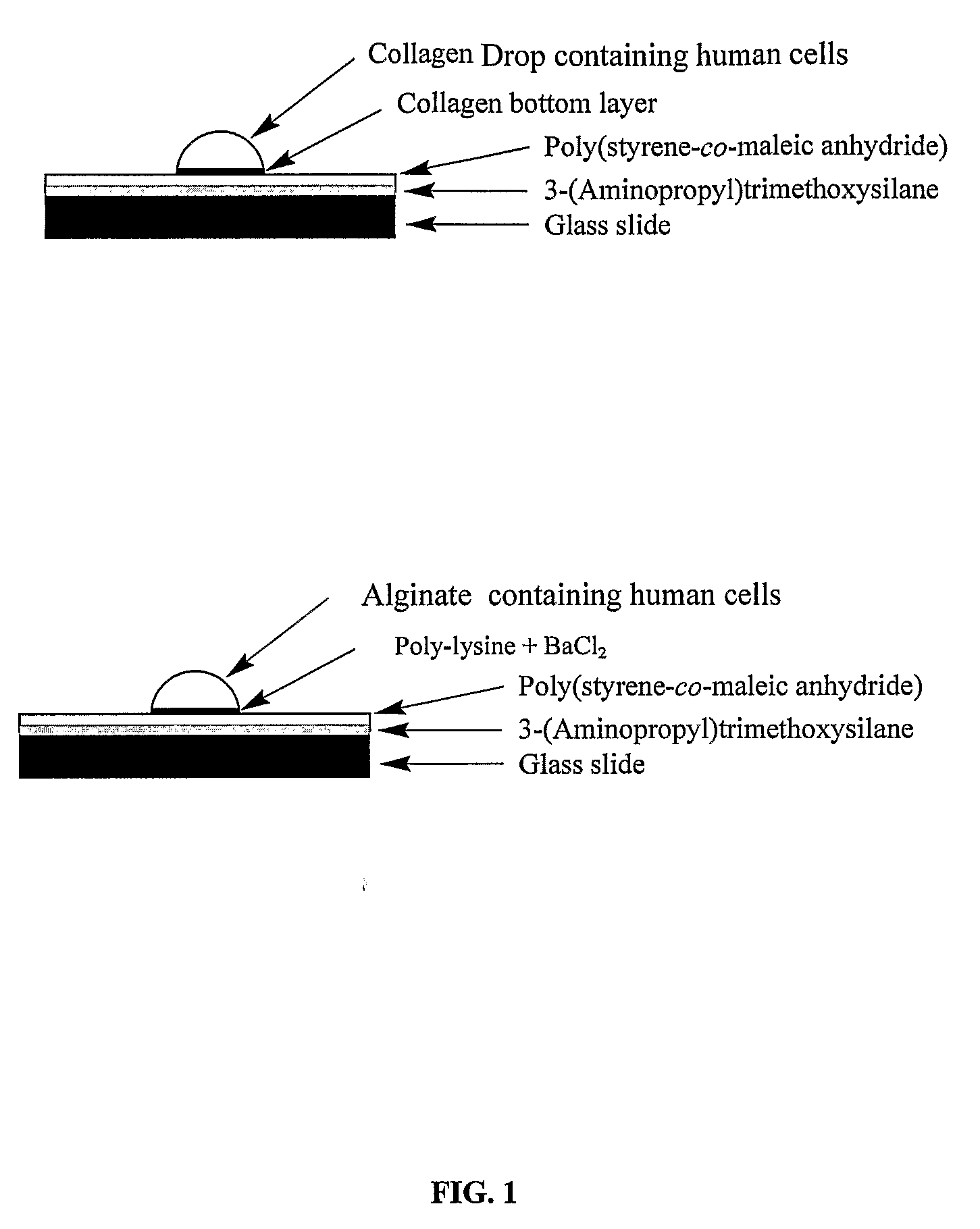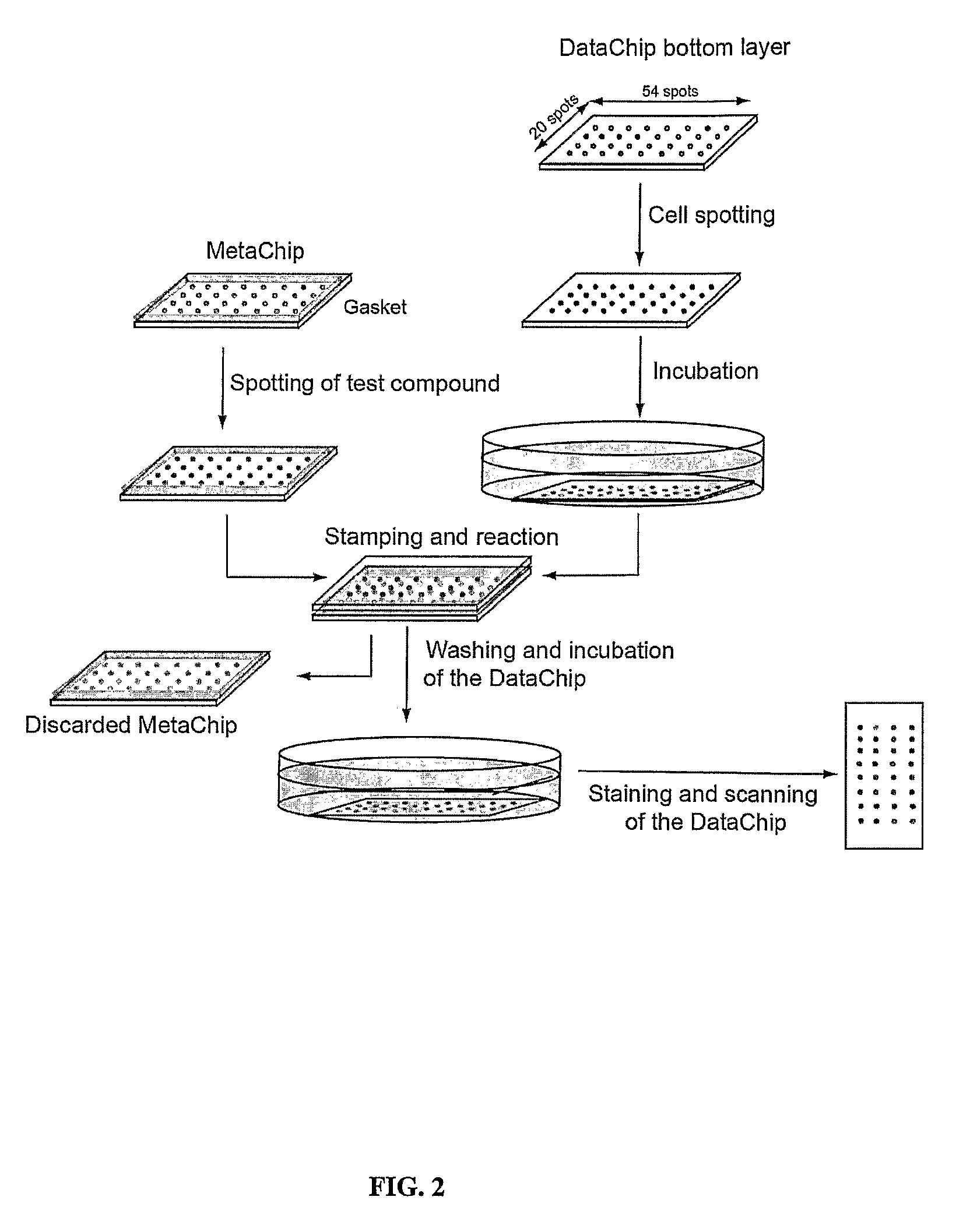Three-dimensional cellular array chip and platform for toxicology assays
a technology of cellular arrays and platform, which is applied in the field of three-dimensional cellular array chips and platform for toxicology assays, can solve the problems reducing the success rate of drug development, and reducing etc., so as to achieve the effect of increasing the number of potential drug candidates and not necessarily advancing to pharmaceuticals
- Summary
- Abstract
- Description
- Claims
- Application Information
AI Technical Summary
Benefits of technology
Problems solved by technology
Method used
Image
Examples
example 1
Cell Culture
[0090]MCF7 human breast cancer cells (ATCC) were grown in Dulbecco's Modified Eagle's Medium (DMEM from Sigma, St. Louis, Mo.) supplemented with 5% fetal bovine serum (FBS from Invitrogen, Carlsbad, Calif.) and 1% penicillin-streptomycin (Invitrogen) in T-25 cell-culture flasks in a humidified 5% CO2 incubator (ThermoForma Electron Co., Marietta, Ohio) at 37° C. Confluent layer of cells were sub-cultured every 2-3 days by trypsinization with 0.05% trypsin-0.53 mM EDTA (Invitrogen). Cell suspension was prepared by trypsinizing confluent cell monolayer and resuspending the cells in 5% FBS-supplemented DMEM to a concentration of 4.5×106 cells / mL.
[0091]Hep3B human hepatoma cells (ATCC) were grown in Roswell Park Memorial Institute (RPMI) medium 1640 supplemented with 10% FBS and 1% penicillin-streptomycin in T-25 cell-culture flasks. Confluent layer of cells were sub-cultured every 2-3 d by trypsinization with 0.05% trypsin-0.53 mM EDTA (Invitrogen). Cell suspension was prep...
example 2
Chemical Modification or Functionalization of Glass Substrates
[0092]For the very even silanization of a glass surface, the silanol group (—SiOH) on the surface was exposed by removing all dirt with strong acids. Borosilicate microscope slides (25×75 mm2 from Fisher, Pittsburgh, Pa.) were placed in a removable glass slide rack (Fisher) and immersed in a solution of methanol:HCl (1:1 v / v) for 2 hr.
[0093]After rinsing the slides in de-ionized distilled water (dd H2O) twice, the slides were further cleaned in concentrated sulfuric acid (96.5%) for 2 hr. After rinsing acid-cleaned slides in dd H2O five times, the slides were rinsed once in acetone and exposed to nitrogen gas stream to dry.
[0094]Amino group functionalization on the slide surface was achieved by using 3-(aminopropyl) trimethoxysilane (APTMS from Sigma) in toluene. Briefly, the acid-cleaned slides were immersed in 5% (v / v) of APTMS in toluene containing 0.5% (v / v) of methylene chloride and sonicated for 1 h.
[0095]Following ...
example 3
Measurement of Amine Density by Fluorescein Isothiocyanate (FITC) Labeling
[0099]To monitor the amine density on the slide at different stages of slide treatment, the amine groups on the surface was labeled with green fluorescent FITC after modification with APTMS, PS-MA, and collagen.
[0100]The stock solution of fluorescein isothiocyanate (FITC) was prepared by dissolving reactive FITC dye (FluoReporter® protein labeling kit from Molecular Probes) in 50 μL of DMSO and the working solution was prepared by diluting the stock solution with 200 mL of 50 mM potassium phosphate buffer (pH 8). The slides were incubated in the dye solution for 1 hr with gentle magnetic stirring. After washing the slides three times in dd H2O to remove unbound dye, the slides were dried by rinsing in acetone and exposing to nitrogen gas stream. The green fluorescence intensity on the slides was measured using a GenePix® Professional 4200A scanner (Molecular Devices Co., Sunnyvale, Calif.) equipped with blue l...
PUM
 Login to View More
Login to View More Abstract
Description
Claims
Application Information
 Login to View More
Login to View More - R&D
- Intellectual Property
- Life Sciences
- Materials
- Tech Scout
- Unparalleled Data Quality
- Higher Quality Content
- 60% Fewer Hallucinations
Browse by: Latest US Patents, China's latest patents, Technical Efficacy Thesaurus, Application Domain, Technology Topic, Popular Technical Reports.
© 2025 PatSnap. All rights reserved.Legal|Privacy policy|Modern Slavery Act Transparency Statement|Sitemap|About US| Contact US: help@patsnap.com



